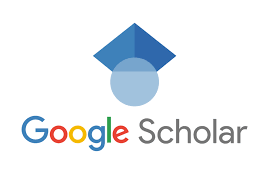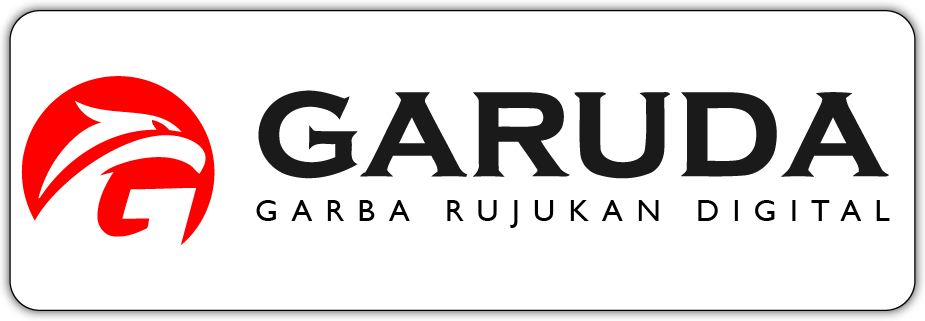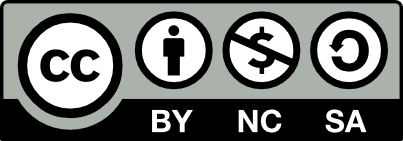EFEKTIVITAS PENDIDIKAN KESEHATAN MENGGUNAKAN MEDIA AUDIOVISUAL TERHADAP EFIKASI DIRI KEMANDIRIAN IBU NIFAS
Abstract
The independence of postpartum mothers can be achieved if the midwifery care activities are based on good cooperation between midwives in providing knowledge and motivation to postpartum mothers in meeting their needs. What is very much needed in postpartum care is the provision of adequate and quality postpartum care. In such situations, the role of the midwife in assisting the health of the individual is very important. The aim of the research is to determine the effectiveness of health education using audiovisual media on the knowledge, attitudes, and behaviors of postpartum mothers' independence, so that postpartum mothers remain healthy in fulfilling their role as new mothers. Additionally, postpartum mothers can continue to perform their usual activities. This research method uses a quasi-experimental design with pre- and post-tests with a control group. The data collection technique was conducted through purposive sampling. The sample size for the study uses hypothesis testing for the difference in means between two independent groups.
The data collection technique was carried out by purposive sampling. The sample size of the study used a hypothesis test of the average difference in two independent groups (Lameshow, 2001) so that the number of 30 treatment respondents and 30 control respondents was obtained. Data analysis used paired t-test and Independent t-test statistical tests. The results of the study showed an increase in knowledge, attitudes and behavior in controlling postpartum maternal hypertension in the intervention group. There was a significant difference in knowledge, attitudes and behavior in postpartum mothers about postpartum maternal independence between the intervention group and the control group after the intervention (p value: 0.000). Health education using audiovisual media for postpartum mothers about postpartum maternal independence can be replicated for use in various health service settings.
References
Asrina, A. et al. (2021) ‘Hubungan Umur, Tingkat Pengetahuan Dan Paritas Ibu Nifas Dengan Pelaksanaan Bounding Attachment’, Jurnal Ilmu Kesehatan Bhakti Husada: Health Sciences Journal, 12(1), pp. 90–96. Available at: https://doi.org/10.34305/jikbh.v12i1.259.
Centers for Disease, C. and P. (2021) ‘Physical Activity Recommendations for Pregnant and Postpartum Women | Physical Activity | DNPAO | CDC’, p. 1.
DeGroot, D.W. et al. (2021) ‘The effect of pregnancy and the duration of postpartum convalescence on the physical fitness of healthy women: A cohort study of active duty servicewomen receiving 6 weeks versus 12 weeks convalescence’, PLoS ONE, 16(7 July), pp. 1–19. Available at: https://doi.org/10.1371/journal.pone.0255248.
Febriana, T. (2024) ‘THE EFFECTIVENESS OF ANDROID- BASED “ HALLO MANIS ” M- EFEKTIVITAS APLIKASI M- HEALTH “ HALLO MANIS ” BERBASIS’, 17(1), pp. 37–47. Available at: https://doi.org/10.24252/kesehatan.v17i1.31056.
Hadi, E.N. et al. (2022) ‘Health education to improve low-birthweight infant care practices in Central Jakarta, Indonesia’, Health Education Research, 37(2), pp. 133–141. Available at: https://doi.org/https://doi.org/10.1093/her/cyac005.
Hamidiyanti, B.Y.F. (2019) ‘Kemampuan Ibu Postpartum Primipara Remaja Dalam Menyusui Bayi Baru Lahir di Wilayah Kerja UPT BLUD Puskesmas Narmada Kabupaten Lombok Barat NTB 2017’, Jurnal Midwifery Update (MU), 1(1), p. 18. Available at: https://doi.org/10.32807/jmu.v1i1.35.
Herath, I.N.S., Balasuriya, A. and Sivayogan, S. (2016) ‘Factors associated with compliance to a course of physical exercises for a selected group of primigravida mothers in Sri Lanka’, Sri Lanka Journal of Obstetrics and Gynaecology, 37(4), p. 72. Available at: https://doi.org/10.4038/sljog.v37i4.7774.
Junengsih, Jehanara, Shentya Fitriana, M.H.S. (2023) ‘Android – Based “ EDUGARLIN ” Application in Increasing Knowledge and Attitudes of Postpartum Mother about Postpartum Fitness’, Jurnal Ilmu Dan Teknologi Kesehatan, 11(1), pp. 1–19. Available at: https://doi.org/10.32668/jitek.v11i1.1083.
Kemenkes RI (2020) Pedoman pelayanan antenatal, persalinan, nifas, dan bayi baru lahir di Era Adaptasi Baru.
Law, K.H. et al. (2019) ‘Stress, Depressive Symptoms, and Maternal Self-Efficacy in First-Time Mothers: Modelling and Predicting Change across the First Six Months of Motherhood’, Applied Psychology: Health and Well Being, 11(1). Available at: https://doi.org/https://doi.org/10.1111/aphw.12147.
Listiyaningsih, M.D. and Nirmasari, C. (2019) ‘Analisis Faktor yang Berhubungan dengan Parenting Self Efficacy pada Periode Awal Postpartum di Puskesmas Bergas’, Jurnal Ilmiah Kesehatan Ar Rum Salatiga, 3. Available at: https://doi.org/https://doi.org/10.36409/jika.v3i2.34.
Mustikawati, I.S. et al. (2022) ‘The Effectiveness of Newborn Care Promotion on Increasing Knowledge, Attitude, and Breastfeeding Practice among Mothers in North Jakarta’, pp. 433–442. Available at: https://doi.org/10.26911/icphpromotion.fp.08.2021.01.
Nursanti, I., Anggraini, D. and Handayani, P. (2024) ‘Edukasi pelaksanaan perawatan bayi baru lahir untuk meningkatkan kemandirian ibu post partum di jakarta pusat’, Prosiding Seminar Nasional LPPM UMJ [Preprint].
Oktaviani, M., Wahyu Ningrum, E. and Raudotul Ma’rifah, A. (2022) ‘Gambaran Maternal Self-Efficacy Persiapan Menjadi Orang Tua pada Ibu Hamil Trimester III di Wilayah Kerja Puskesmas Purwokerto Selatan’, Seminar Nasional Penelitian dan Pengabdian Kepada Masyarakat (SNPPKM), pp. 675–686.
Pemiliana, P.D. (2024) ‘Pengaruh Kunjungan Rumah oleh Bidan terhadap Peningkatan Pengetahuan Ibu tentang Perawatan Bayi Baru Lahir’, Inovasi Kesehatan Global, 1(3).
Pramudianti, D.C., Raden, A. and Suryaningsih, E.K. (2018) ‘Hubungan tingkat pendidikan formal dengan parenting self-efficacy periode awal nifas pada ibu pasca sectio caesarea’, Jurnal Kebidanan dan Keperawatan Aisyiyah, 13(1), pp. 34–41. Available at: https://doi.org/10.31101/jkk.194.
Rahmawati, R.S.N. (1970) ‘Pengembangan Media Belajar Kegawatdaruratan Maternal Atonia Uteri Berbasis E-Learning’, Jurnal Ilmu Kesehatan, 5(2), p. 38. Available at: https://doi.org/10.32831/jik.v5i2.133.
Rahmawati, W. (2023) ‘the Factor of Primipara Age on the Taking in Phase Process in the Puerperium Period (Pengaruh Usia Primipara Terhadap Proses Fase Taking in Pada Masa Puerperium)’, Media Husada Journal of Midwifery Science, 1(1), pp. 1–6.
Rintiani, A., Dewi, Y.I. and Utami, S. (2022) ‘Faktor-Faktor Yang Berhubungan Dengan Kemampuan Ibu Primipara Dalam Merawat Bayi Baru Lahir’, BIMIKI (Berkala Ilmiah Mahasiswa Ilmu Keperawatan Indonesia), 10(2), pp. 85–92. Available at: https://doi.org/10.53345/bimiki.v10i2.313.
Selvan, M.S. and Surjaningrum, E.R. (2023) ‘Maternal Self-Efficacy, Body Dissatisfaction, and Postpartum Depression in Primiparous Indonesian Mothers’, INSAN Jurnal Psikologi dan Kesehatan Mental, 8(1), pp. 1–26. Available at: https://doi.org/10.20473/jpkm.v8i12023.1-26.
Sukmawati, Kody, M.M. and Sukartiningsih, E. (2023) ‘Pengaruh Pemberian Booklet Terhadap Peningkatan Pengetahuan , Sikap Dan Keterampilan Pada Ibu Primipara Dalam Perawatan Bayi Baru Lahir kematian bayi di bawah usia 1 tahun per 1000 hidup , angka ini merupakan indikator yang Memandikan bayi dan merawat tal’, Jurnal Ilmu Kesehatan dan Keperawatan, 1(1).
Vance, A.J. et al. (2020) ‘Development of parenting self-efficacy in mothers of high-risk infants’, Early Human Development, 141. Available at: https://doi.org/https://doi.org/10.1016/j.earlhumdev.2019.104946.
Virgian, K. and Setiawati, D. (2023) ‘“ Menyusui asi - q ” android application for relax and smooth breastfeeding’, Science Midwifery, 10(6), pp. 4852–4860.
Walimah, E., Sunarya, U. and Munada, M.N.S. (2023) ‘the Relationship Between Feeding Patterns in Toddlers With the Incidence of Stunting’, Public Health Sebelas April Journal, 2(1), pp. 41–45. Available at: https://doi.org/10.32668/jitek.v12i2.1892.
Wang, Q. et al. (2021) ‘Exploring maternal self-efficacy of first-time mothers among rural-to-urban floating women: A quantitative longitudinal study in china’, International Journal of Environmental Research and Public Health, 18(6), pp. 1–12. Available at: https://doi.org/10.3390/ijerph18062793.
Warseno, A. (2019) ‘Tingkat Pendidikan Ibu Memiliki Hubungan Dengan Status Perkembangan Motorik Halus Anak Usia Prasekolah’, Jurnal Keperawatan Malang, 4(1), pp. 57–66. Available at: https://doi.org/10.36916/jkm.v4i1.83.
Zakiyyah, M. et al. (2018) ‘Pendidikan Kesehatan Dan Pelatihan Senam Nifas’, Jurnal Pengabdian Kepada Masyarakat, 2(1), pp. 11–16.
Zulianti, E. and Aniroh, U. (2021) ‘Korelasi Paritas Dengan Kemampuan Ibu Post Partum Dalam Merawat Bayi Baru Lahir’, Jurnal Keperawatan dan Kesehatan Masyarakat Cendekia Utama, 10(1), p. 92. Available at: https://doi.org/10.31596/jcu.v10i1.706.
Copyright (c) 2025 IFI CABANG KOTA BEKASI

This work is licensed under a Creative Commons Attribution-NonCommercial-ShareAlike 4.0 International License.
Submission Preparation Checklist
As part of the submission process, authors are required to check off their submission's compliance with all of the following items, and submissions may be returned to authors that do not adhere to these guidelines.
- I hereby declare that this submission is my own work.
- I hereby stated that this manusrcipt have no plagiarism matter.
- I declare the submission has no potential conflict of interest.
- I hereby stated that this manusrcipt have never been previously published in any other scientific publication and not being under reviewing process of any other scientific publication.
- The submitted manuscript contains no least than 2.000 words and not exceed 25 pages A4 including figures and tables, without any appendixes.
- The submitted manuscript has been written using Open Office Text Document (.odt) or Microsoft Word (.doc/.docx).
- Title already brief and concise, written in English, and less than 15 words.
- Abstract already brief and concise and not exceed 150 words in English.
- Keywords are written in English, between three to five phrase.
- The manuscript structure already consist: Introduction, Method/Material, Result and Discussion, Conclusion, Acknowledgement, and References.
- References are written according the writing style of MEV. The primary references are no less than 80% from at least fifteen sources and had been taken from the late ten year publications.
- The instructions in Ensuring a Blind Review have been followed to the submitted manuscript.
- (At least) two scientific referees have been suggested in "Comments for the Editor" textbox in the bottom of this page.
Copyright Notice
Retained Rights/Terms and Conditions of Publication
1. As an author you (or your employer or institution) may do the following:
- make copies (print or electronic) of the article for your own personal use, including for your own classroom teaching use;
- make copies and distribute such copies (including through e-mail) of the article to research colleagues, for the personal use by such colleagues (but not commercially or systematically, e.g. via an e-mail list or list server);
- present the article at a meeting or conference and to distribute copies of the article to the delegates attending such meeting;
- for your employer, if the article is a ‘work for hire’, made within the scope of your employment, your employer may use all or part of the information in the article for other intra-company use (e.g. training);
- retain patent and trademark rights and rights to any process, procedure, or article of manufacture described in the article;
- include the article in full or in part in a thesis or dissertation (provided that this is not to be published commercially);
- use the article or any part thereof in a printed compilation of your works, such as collected writings or lecture notes (subsequent to publication of the article in the journal); and prepare other derivative works, to extend the article into book-length form, or to otherwise re-use portions or excerpts in other works, with full acknowledgement of its original publication in the journal;
- may reproduce or authorize others to reproduce the article, material extracted from the article, or derivative works for the author’s personal use or for company use, provided that the source and the copyright notice are indicated, the copies are not used in any way that implies RCEPM-LIPI endorsement of a product or service of any employer, and the copies themselves are not offered for sale.
All copies, print or electronic, or other use of the paper or article must include the appropriate bibliographic citation for the article’s publication in the journal.
2. Requests from third parties
Although authors are permitted to re-use all or portions of the article in other works, this does not include granting third-party requests for reprinting, republishing, or other types of re-use. Requests for all uses not included above, including the authorization of third parties to reproduce or otherwise use all or part of the article (including figures and tables), should be referred to RCEPM-LIPI by going to our website athttp://telimek.lipi.go.id.
3. Author Online Use
- Personal Servers. Authors and/or their employers shall have the right to post the accepted version of articles pre-print version of the article, or revised personal version of the final text of the article (to reflect changes made in the peer review and editing process) on their own personal servers or the servers of their institutions or employers without permission from RCEPM-LIPI, provided that the posted version includes a prominently displayed RCEPM-LIPI copyright notice and, when published, a full citation to the original publication, including a link to the article abstract in the journal homepage. Authors shall not post the final, published versions of their papers;
- Classroom or Internal Training Use. An author is expressly permitted to post any portion of the accepted version of his/her own articles on the author’s personal web site or the servers of the author’s institution or company in connection with the author’s teaching, training, or work responsibilities, provided that the appropriate copyright, credit, and reuse notices appear prominently with the posted material. Examples of permitted uses are lecture materials, course packs, e-reserves, conference presentations, or in-house training courses;
- Electronic Preprints. Before submitting an article to an MEV Journal, authors frequently post their manuscripts to their own web site, their employer’s site, or to another server that invites constructive comment from colleagues. Upon submission of an article to MEV Journal, an author is required to transfer copyright in the article to RCEPM-LIPI, and the author must update any previously posted version of the article with a prominently displayed RCEPM-LIPI copyright notice. Upon publication of an article by the RCEPM-LIPI, the author must replace any previously posted electronic versions of the article with either (1) the full citation to the work with a Digital Object Identifier (DOI) or link to the article abstract in MEV journal homepage, or (2) the accepted version only (not the final, published version), including the RCEPM-LIPI copyright notice and full citation, with a link to the final, published article in journal homepage.
4. Articles in Press (AiP) service
RCEPM-LIPI may choose to publish an abstract or portions of the paper before we publish it in the journal. Please contact our Production department immediately if you do not want us to make any such prior publication for any reason, including disclosure of a patentable invention.
5. Author/Employer Rights
If you are employed and prepared the article on a subject within the scope of your employment, the copyright in the article belongs to your employer as a work-for-hire. In that case, RCEPM-LIPI assumes that when you sign this Form, you are authorized to do so by your employer and that your employer has consented to the transfer of copyright, to the representation and warranty of publication rights, and to all other terms and conditions of this Form. If such authorization and consent has not been given to you, an authorized representative of your employer should sign this Form as the Author.
6. RCEPM-LIPI Copyright Ownership
It is the formal policy of RCEPM-LIPI to own the copyrights to all copyrightable material in its technical publications and to the individual contributions contained therein, in order to protect the interests of the RCEPM-LIPI, its authors and their employers, and, at the same time, to facilitate the appropriate re-use of this material by others. RCEPM-LIPI distributes its technical publications throughout the world and does so by various means such as hard copy, microfiche, microfilm, and electronic media. It also abstracts and may translate its publications, and articles contained therein, for inclusion in various compendiums, collective works, databases and similar publications
Every accepted manuscript should be accompanied by "Copyright Transfer Agreement" prior to the article publication.





